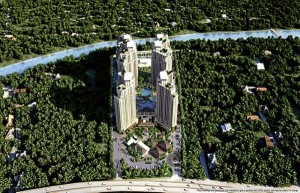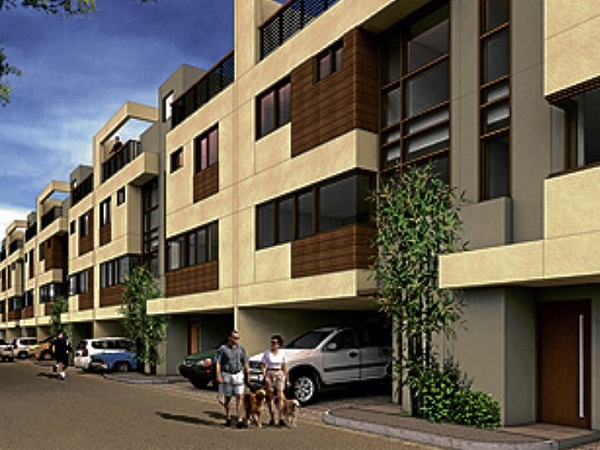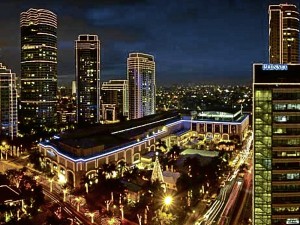Flood-free Rockwell a refuge during disasters
At the height of the torrential rains and massive flooding in the metro last week, one local government official was overheard on the radio advising his constituents to temporarily seek shelter within the vicinity of Rockwell Center.
The official was telling those who had been stranded to instead pass their time within the Rockwell area, and wait for the floods to subside before going home.
Such an anecdote was by no means an entirely novel tale. After all, the onslaught of Tropical Storm “Ondoy” in 2009 also spawned similar stories that tell of people and cars finding temporary refuge within this 15.5-hectare flagship project of the Lopez-led Rockwell Land Corp. in Makati.
But what these stories ultimately show us is the underlying fact that the Rockwell Center has aptly demonstrated how, with proper and careful planning, calamity-proof structures and communities can be made into a reality.
In fact, all of the completed (Rockwell Center-West and East Block Towers, The Power Plant Mall and the Rockwell Business Center) and ongoing projects (205 Santolan by Rockwell, Edades Tower and Garden Villas and The Grove by Rockwell) of Rockwell Land have remained flood-free even during the heaviest of downpours.
Article continues after this advertisementThis is perhaps why Rockwell Land developments have since become the preferred choice, as these provide residents a secure and safe environment that embodies the true meaning of “master plan.”
Article continues after this advertisementIndeed, Rockwell projects can serve as a scale model for future developments. But company officials were quick to note that one need not be a rocket scientist to put up structures that could withstand damages wrought by nature.
Site selection

WITH the Philippines being prone to severe assaults of typhoons and monsoons, The Grove is literally built to stand on land well above the reaches of floods beyond its doorsteps.
One crucial factor, according to Rockwell, was the selection of the area where the property will be built and how you will be able to work around the existing conditions and landscape.
“We strictly adhere to clearing the land we acquire properly through our site selection process. We make sure that the land we acquire and build on does not have a history of flooding,” company officials said.
While Rockwell Land strives to ensure that its prospective sites are not prone to flooding, some of its developments, admittedly, have been situated near major outflows of water. Yet surprisingly, these have managed to stay flood free. How? The water volume from the rain, according to officials, is distributed through multiple drainage lines, thus easing the flow of water in its system.
As previously reported, Rockwell Land, for all its property developments, commissions a 100-year flood cycle study, which will enable the company to gauge the property’s elevation and to craft a suitable plan for the area.
100-year flood cycle
According to officials, Rockwell Land taps its consultants to study 100 years of possible flood cycles, to which the company adjusts the planning and execution of their developments. Using the same study, Rockwell Land is also able to develop waterfront policies that work with nature’s course instead of going against it.
Meanwhile, Rockwell Land has also underscored the necessity of proper maintenance for any project, especially for a tropical country like the Philippines. This will ensure that all their projects will remain calamity-proof as targeted and promised.
“For maintenance, we make sure that all our drainage outlets are cleaned and de-silted during the summer months (starts April every year) to prepare for the rainy season. During heavy rains, we have a stand-by team to respond to any emergencies, for any concerns. Our security and ambulance teams are also on stand-by during typhoons or heavy rains,” they explained.
“And after heavy rains, we again conduct inspection on all areas to remove debris that might have flowed to our system and conduct cleaning as necessary. This is done to ensure that we are again prepared for future typhoons and heavy rain,” they added.

